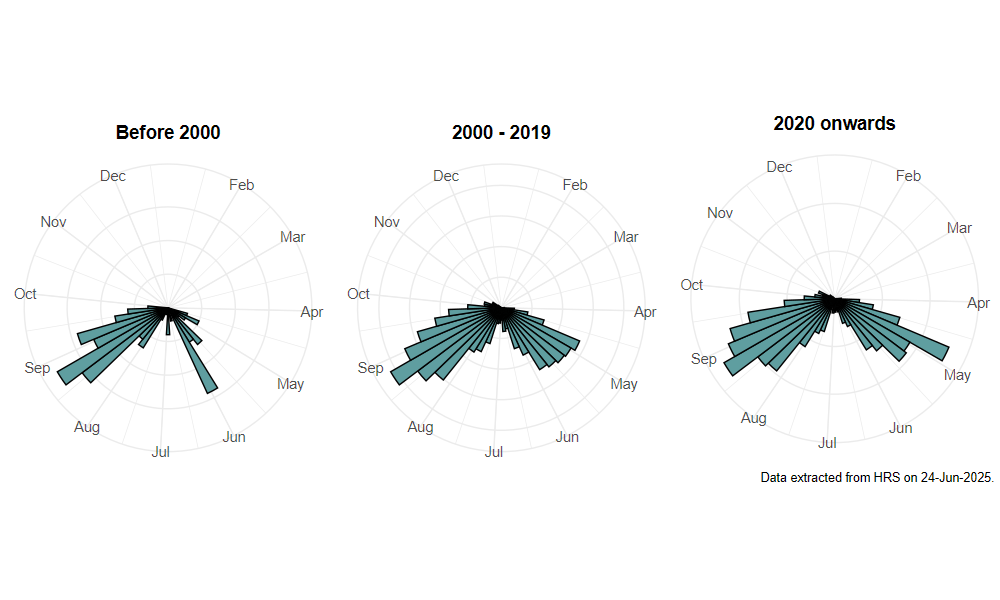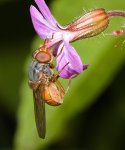Rhingia rostrata (Linnaeus, 1758)
Identification
Identification difficulty = 3. ![]()
![]() according to Ball & Morris, 20241
according to Ball & Morris, 20241
Biology
Larvae where unknown, but both larvae and pupae have been found quite recently (2020/21) in a 'hoverfly lagoons'. Many records are associated with deciduous woodland where they visit flowers in rides and clearings. Like, R. campestris, it has two flight periods in May/June and again in early Autumn, but Autumn records are much more numerous, sometimes notably so (e.g. Coe, 19612).
Flight period
The following plots show the number of unique records per week excluding those reported to be of immature stages.

Status
Was listed as Vulnerable (RDB2) by Shirt, 19873 and Rare (RDB3) by Falk, 19914, but dropped from this status by Ball & Morris, 20145 who consider it LOWER RISK.
Distribution
Although formerly very rare, this species has undergone a dramatic range expansion in southern England and through the Welsh borders (Jones, 20056). It has also established new populations in the East Midlands. More recently it has spread northwards at least as far as the southern Lake District. These changes are not artefacts of recording effort because most of the areas involved have been closely scrutinised for hoverflies for many years. It has also increased markedly in abundance and, in some areas, is at least as frequent if not more frequent, than R. campestris and the two species are frequently observed together visiting the same flowers.

Trends
The following plots show the Frescalo TFactor vs year and a map of the rescaled frequency (all records) for the species.
-
Ball, S., & Morris, R. (2024). Hoverflies of Britain and Ireland. WILDGuides (3rd ed.). Oxford: Princeton University Press. ↩
-
Coe, R. (1961). Massed occurrence of the rare syrphid fly, Rhingia rostrata Linnaeus, at Selsdon Woods in Surrey. Entomologist. ↩
-
Shirt, D. (Ed.). (1987). Red Data Books: 2. Insects. Peterborough: NCC. ↩
-
Falk, S. (1991). A review of the scarce and threatened flies of Great Britain. ( No. 39). Research and Survey in Nature Conservation (pp. 1–194). Peterborough: NCC. ↩
-
Ball, S., & Morris, R. (2014). A review of the scarce and threatened flies of Great Britain. Part 6: Syrphidae. ( No. 9). Species status (pp. 1–130). Peterborough: JNCC. ↩
-
Jones, N. (2005). A dramatic increase in record for Rhingia rostrata in Welsh Marches area. Hoverfly Newsletter, 42, 8–9. ↩
